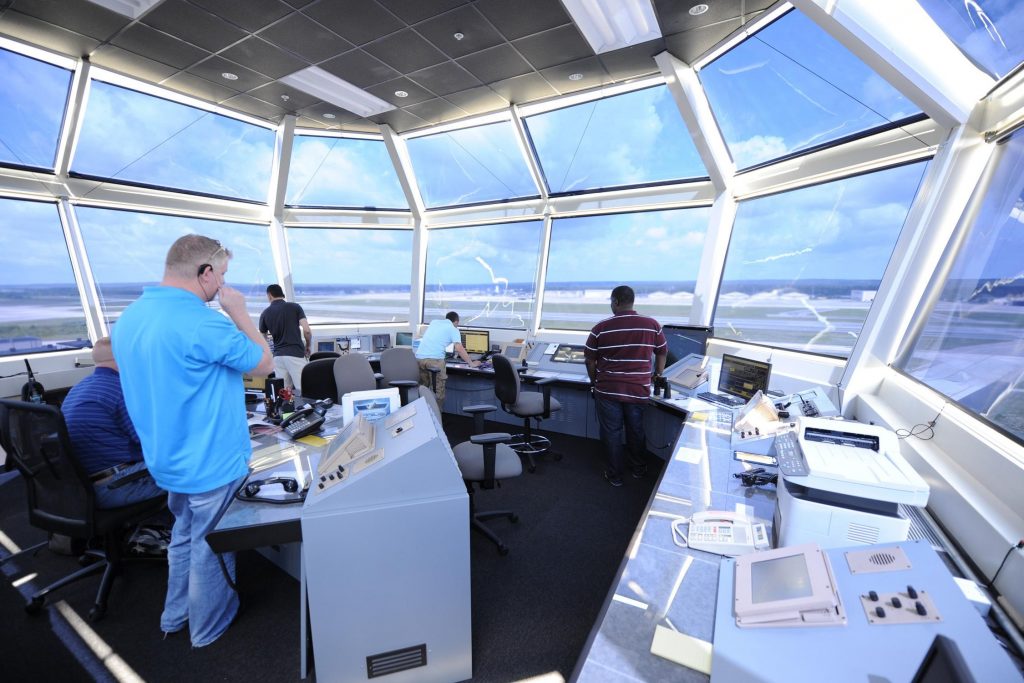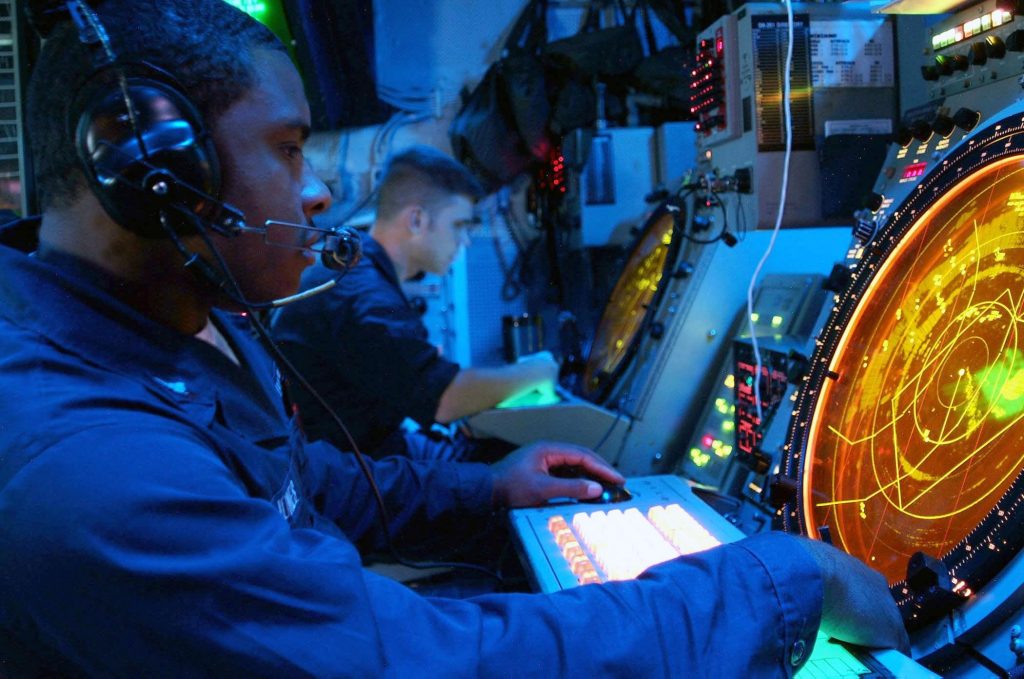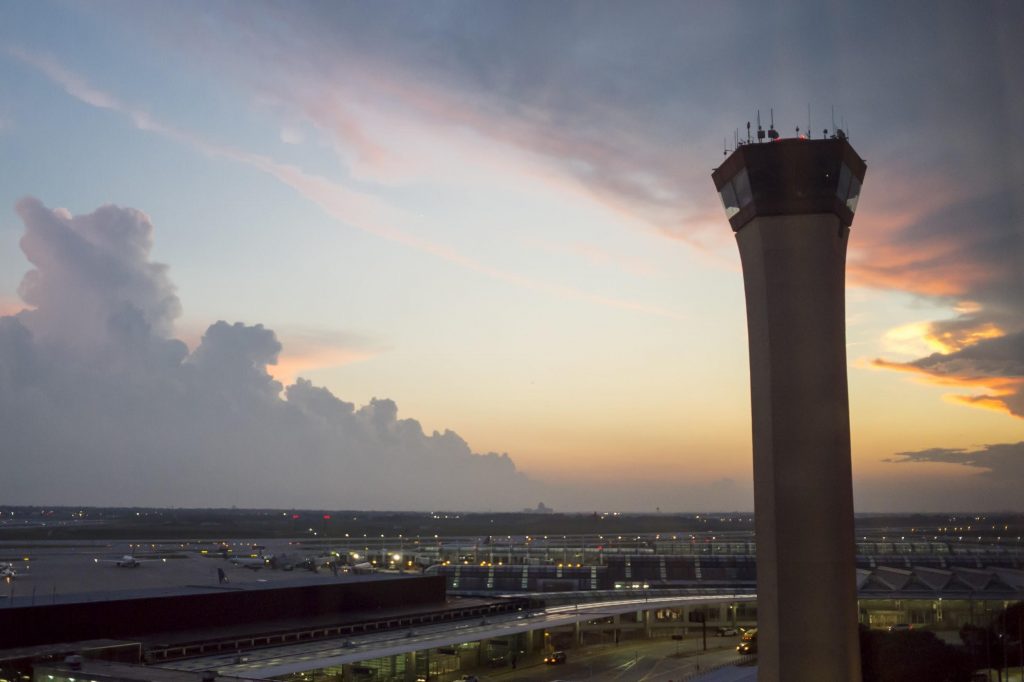InTrans / Dec 30, 2016
5 Questions with…an air traffic controller
Go! Magazine
 posted on December 30, 2016
posted on December 30, 2016
When we’re flying high in the sky, how does air traffic control (ATC) help keep us safe during severe weather?
I spoke to Bobby*, a tower air traffic controller at O’Hare International Airport in Chicago, Illinois. Bobby has been an air traffic controller for nearly eight years, but he said becoming one has been “an ongoing evolution.” When Bobby was 15 or 16, he wasn’t sure if he’d graduate high school or ever go to college in “the traditional way.” So Bobby set his sights on air traffic control and began researching the career.
After high school, Bobby wanted to join the military as an air traffic controller but instead joined as a boom operator (someone responsible for refueling an aircraft while in flight)—something he did for several years. Although he eventually left the military, Bobby never gave up on his goal of being an air traffic controller. In fact, less than a year after leaving, Bobby applied to an open position. He had to pass a series of tests but afterward was approved to go and train at the Federal Aviation Administration (FAA) Academy in Oklahoma City, Oklahoma.
So, what is it like to be an air traffic controller?
What does it take? What makes it a good career path? Here’s what he said!
What are you responsible for?
The general aviation ramps and commercial gates at an airport are “non-movement areas,” and so we don’t control those. The “movement areas” in any given airport are called taxiways, and that’s when ground control gets involved. I’m a tower air traffic controller. The tower controllers physically look out the window at the airplanes on the ground and in the air.

An airport is a close-knit terminal environment. We provide a service within about 5 miles of the airport and up to 3,000 ft in the air; we’ handle all the arrivals and departures within the immediate vicinity as well as all the ground movements.
What other ATC positions are there?
Aside from tower controllers, there are terminal radar approach controllers or TRACONS. They look at a radar display in a dark room—much like what see in the movies—and people often assume it’s the only kind of air traffic controller.

These radar controllers are looking at the arrivals and departures in and out of airports in a close-knit group; TRACON controllers manage an airspace that’s about 45 miles wide and 15,000 feet in the air. That ‘cube’ is the TRACON airspace. In the tower cab that I work in, we also have radars—air and ground radars that allow us to see airplanes on the ground and in the air. We use the same information as TRACONS. It’s just about how it’s magnified; we zoom in really close and they zoom out really far, but we operate on a lot of the same systems. Then there are center controllers that help aircraft transition to higher altitudes. They cover an area of about 5 miles between tower controllers and TRACON controllers.
What’s it like to be an air traffic controller? What’s a typical day at work like?
Based on plane count (not passenger count), O’Hare is the busiest airport in the world. We’re doing a little over 2,800 operations a day—that’s airplanes coming in and out of the airport. It’s a high-paced environment, similar to working at a restaurant.
How is NextGen helping to make air travel safer, specifically during severe weather?
Under NextGen, there’s a huge transitional piece going on in aviation right now, and the global positioning system (GPS) plays a huge role in its success. Although airplanes have had GPS for over 25 years, the FAA is now implementing GPS into different programs. One example is “ADS-B,” which stands for Alpha Delta Sierra Bravo. ADS-B has to be fully implemented by 2020, meaning every airplane that flies by 2020 has to have an ADS-B transponder on it. With the ADS-B technology that’s coming on board right now, controllers are able to send a lot more information via GPS to the airplanes. When airplanes have ADS-B technology brought into their cockpit, it allows the airplanes to communicate with each other more efficiently.
The most important function of ADS-B is weather. ADS-B is able to create a mosaic of live-feed weather data across the country, and pilots can now receive this information straight to their cockpit. The old weather radar systems are nowhere near as effective as ADS-B, which gives pilots more accurate data of the severe weather systems in the area, and it can make the difference between knowing whether or not certain areas of airspace are fit for travel or not. A storm cloud with just radar technology could appear larger or smaller than it actually is, but ADS-B technology allows for more accurate data on these weather systems, thus allowing pilots to make safer and more informed decisions about where to travel. ADS-B could make the difference between an airplane crashing or not, since they’re more equipped for severe weather and calculating a more precise flight plan. That’s important when you consider things like lightning, hail, downdrafts, and other severe weather that can affect an airplane in the sky.

Why should anyone want to be an air traffic controller? What kind of person does it take?
If you love aviation, there’s no better way to interact with planes. Plus, the median annual wage for an air traffic control specialist was $127,805 in 2016 or about $60 per hour.
Related links
ATCS new hire info: https://www.faa.gov/about/office_org/headquarters_offices/arc/programs/academy/student_services/ATCS_FAQ/
Aviation careers: https://www.faa.gov/jobs/career_fields/aviation_careers/
NACTA: www.natca.org/about-us/who-we-represent/
*Name has been changed for privacy. Comments and opinions do not represent those of the Federal Aviation Administration (FAA).
By Hannah Postlethwait, Go! Staff Writer